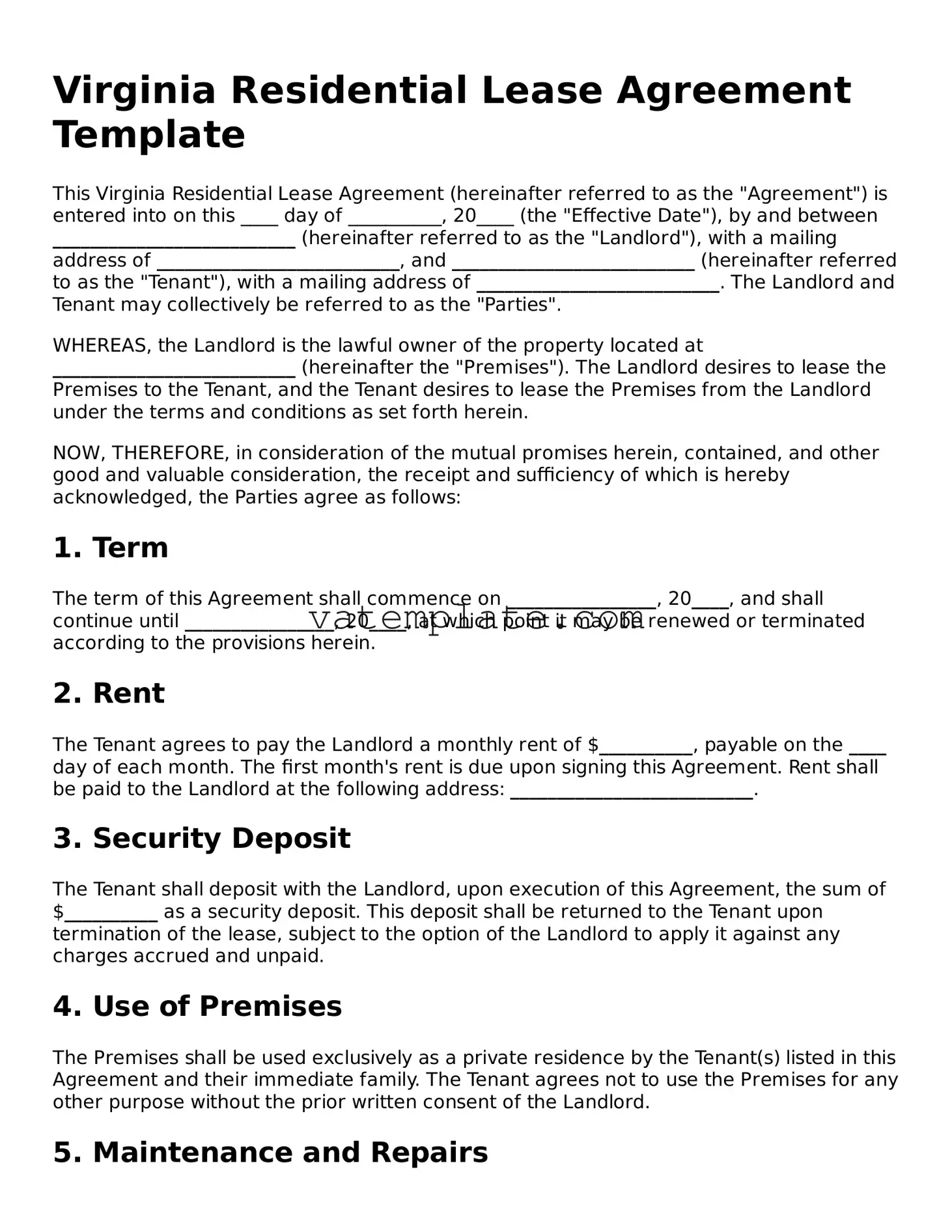Virginia Residential Lease Agreement Template
This Virginia Residential Lease Agreement (hereinafter referred to as the "Agreement") is entered into on this ____ day of __________, 20____ (the "Effective Date"), by and between __________________________ (hereinafter referred to as the "Landlord"), with a mailing address of __________________________, and __________________________ (hereinafter referred to as the "Tenant"), with a mailing address of __________________________. The Landlord and Tenant may collectively be referred to as the "Parties".
WHEREAS, the Landlord is the lawful owner of the property located at __________________________ (hereinafter the "Premises"). The Landlord desires to lease the Premises to the Tenant, and the Tenant desires to lease the Premises from the Landlord under the terms and conditions as set forth herein.
NOW, THEREFORE, in consideration of the mutual promises herein, contained, and other good and valuable consideration, the receipt and sufficiency of which is hereby acknowledged, the Parties agree as follows:
1. Term
The term of this Agreement shall commence on ________________, 20____, and shall continue until ________________, 20____, at which point it may be renewed or terminated according to the provisions herein.
2. Rent
The Tenant agrees to pay the Landlord a monthly rent of $__________, payable on the ____ day of each month. The first month's rent is due upon signing this Agreement. Rent shall be paid to the Landlord at the following address: __________________________.
3. Security Deposit
The Tenant shall deposit with the Landlord, upon execution of this Agreement, the sum of $__________ as a security deposit. This deposit shall be returned to the Tenant upon termination of the lease, subject to the option of the Landlord to apply it against any charges accrued and unpaid.
4. Use of Premises
The Premises shall be used exclusively as a private residence by the Tenant(s) listed in this Agreement and their immediate family. The Tenant agrees not to use the Premises for any other purpose without the prior written consent of the Landlord.
5. Maintenance and Repairs
The Tenant agrees to keep the rented premises clean and sanitary and to pay for any damage caused by their abuse or neglect. The Landlord is responsible for maintaining the property in a habitable condition and complies with all applicable codes and regulations.
6. Governing Law
This Agreement shall be governed by and construed in accordance with the laws of the State of Virginia. Any disputes arising under or related to this Agreement shall be adjudicated in the state of Virginia.
7. Entire Agreement
This Agreement constitutes the entire agreement between the Parties and supersedes any prior understanding or representation of any kind preceding the date of this Agreement. There are no other promises, conditions, understandings or other agreements, whether oral or written, relating to the subject matter of this Agreement.
Signatures
By signing below, the Parties agree to the terms and conditions outlined in this Virginia Residential Lease Agreement.
Landlord Signature: _______________________________ Date: ______________
Tenant Signature: _________________________________ Date: ______________
